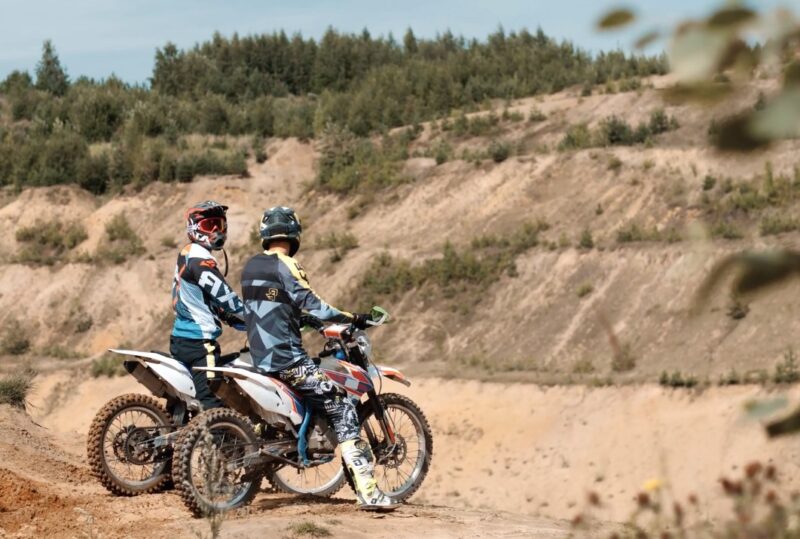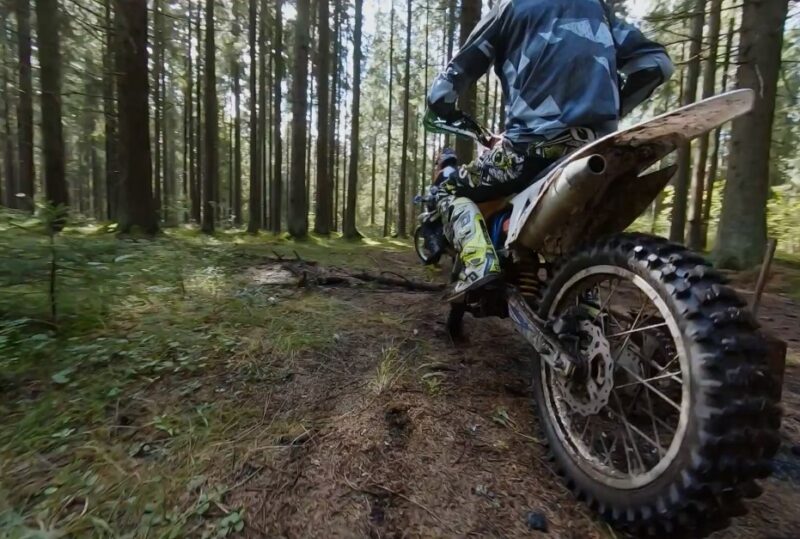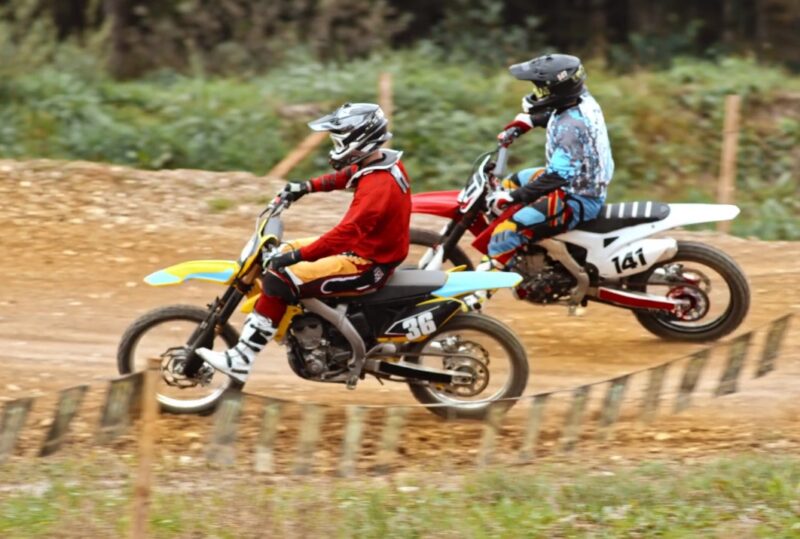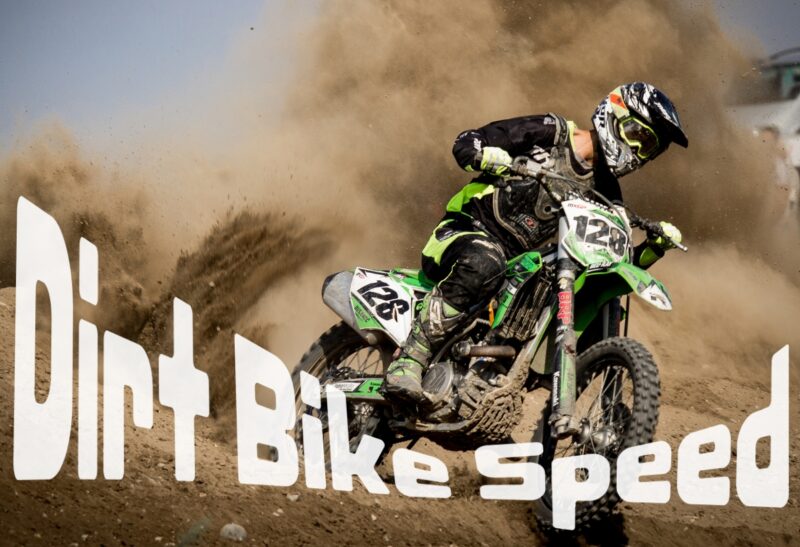Dirt biking is an exhilarating sport that combines adrenaline, skill, and precision. One of the most intriguing aspects of dirt biking is the speed these powerful machines can achieve. From open trails to motocross tracks, dirt bike enthusiasts push their limits to experience the thrill of high-speed riding.
But just how fast can a dirt bike go? In this article, we delve into the world of dirt biking speed, exploring the factors that influence a dirt bike’s top speed, safety considerations, and the records set by professional riders.
Dirt bikes are designed for off-road terrain, providing riders with the ability to conquer challenging trails, rocky paths, and uneven surfaces. While top speeds vary depending on the model, engine size, and rider skill, the average speed of a dirt bike typically ranges from 55 to 80 miles per hour (88 to 128 kilometers per hour).
However, experienced riders on specialized models can push the boundaries and achieve speeds exceeding 100 mph (160 km/h) under the right conditions.
Factors Affecting Dirt Bike Speed

Several key factors influence the top speed of a dirt bike. These include:
Engine Power and Size
The engine is the heart of any dirt bike, and its power directly impacts the bike’s speed. Larger engine sizes generally produce more power, resulting in higher top speeds. Two-stroke engines, known for their explosive power delivery, often provide impressive acceleration, while four-stroke engines are favored for their smooth power delivery across a wide RPM range.
Gear Ratio
The gear ratio plays a vital role in determining a dirt bike’s speed. Different gear ratios affect how the engine’s power is transmitted to the wheels. Lower gears provide more torque for quick acceleration and climbing, while higher gears enable higher top speeds. Riders often make adjustments to the gear ratios based on the type of terrain they’re tackling.
Terrain and Surface Conditions

Dirt bikes are designed to handle various terrains, from sand and mud to rocky paths and steep inclines. The type of terrain being ridden significantly affects the bike’s speed. Soft surfaces like sand can slow down a dirt bike, while hard-packed trails or well-maintained tracks can facilitate higher speeds.
Rider Skill and Technique
A skilled rider can extract the maximum potential of a dirt bike’s speed. Proper throttle control, body positioning, and handling techniques are essential for maintaining stability and achieving high speeds. Professional riders often undergo rigorous training to develop the necessary skills to handle their bikes at top speeds.
Aerodynamics
Aerodynamics play a role in a dirt bike’s speed, though to a lesser extent compared to motorcycles designed for high-speed racing. Riders in motocross and off-road settings generally adopt a more upright riding posture, which may increase air resistance but allows for better control and maneuverability on uneven surfaces.
Professional Dirt Bike Speed Records
Professional dirt bike riders have consistently pushed the boundaries of speed, setting impressive records that showcase the capabilities of these machines. Here are a few notable records:
Fastest Recorded Speed on a Dirt Bike
In 2019, professional dirt bike rider Zach Osborne set a new record for the fastest speed on a dirt bike, reaching an astonishing 184.5 mph (297 km/h) on a specially modified Alta Motors electric dirt bike. This record was achieved on the Bonneville Salt Flats in Utah, USA, a location renowned for its vast, flat expanse that allows for high-speed attempts.
Supercross and Motocross Speeds
Supercross and motocross events are known for their intense racing and demanding tracks. While exact top speeds can vary depending on the layout of the track, professional riders in these disciplines can often achieve speeds of 60 to 70 mph (96 to 113 km/h) on straight sections. The emphasis in these disciplines is not solely on top speed but also on agility, technique, and navigating challenging obstacles.
Off-Road Desert Racing
Off-road desert racing, such as the Baja 1000, presents a unique combination of speed and endurance. Riders in these events can reach speeds of up to 100 mph (160 km/h) or more on straight sections of desert terrain. However, the unpredictable nature of off-road racing requires riders to maintain control at high speeds while navigating through rough and uneven terrain.
Safety Considerations at High Speeds

Riding a dirt bike at high speeds requires careful consideration of safety measures to prevent accidents and injuries. Here are some important safety considerations:
Protective Gear
Wearing appropriate protective gear is paramount when riding a dirt bike at high speeds. This includes a DOT-approved helmet, goggles, gloves, a sturdy jacket, pants, and durable riding boots. These items help safeguard riders from potential impacts and abrasions.
Skill Development
Before attempting high-speed riding, it’s crucial for riders to develop their skills gradually. Beginners should start on less demanding terrain, gradually increasing speed as they gain confidence and control. Enrolling in riding courses and seeking guidance from experienced riders can accelerate skill development.
Regular Maintenance
Proper maintenance ensures that a dirt bike operates at its optimal performance level. Regularly inspect brakes, tires, suspension, and other critical components to ensure they are in good condition. A well-maintained bike is safer and more responsive at high speeds.
Terrain Assessment
Before attempting high speeds, assess the terrain to identify potential hazards such as rocks, tree roots, or sudden elevation changes. Being aware of the terrain helps riders anticipate obstacles and adjust their speed accordingly.
FAQs
Can a beginner rider achieve high speeds on a dirt bike?
While it’s possible for beginners to gradually work up to higher speeds, it’s important to prioritize safety and skill development. Beginners should start on less demanding terrain, focus on mastering basic riding techniques, and gradually increase speed as they gain confidence and experience. Rushing into high-speed riding without the necessary skills can lead to accidents and injuries.
Are there speed restrictions for dirt bikes on public trails?
Speed restrictions for dirt bikes on public trails vary depending on local regulations and the type of trail. Many off-road areas have designated speed limits to ensure the safety of riders and other trail users. It’s essential to research and adhere to local rules and regulations to prevent accidents, minimize environmental impact, and promote responsible riding.
How can I improve my dirt bike’s top speed?
Improving a dirt bike’s top speed involves a combination of factors. Upgrading to a more powerful engine, optimizing the gear ratios, and fine-tuning the bike’s suspension can contribute to increased speed. However, it’s crucial to strike a balance between speed and control, as excessively modifying a dirt bike without the necessary skills can lead to instability and reduced safety.
What should I consider when choosing a dirt bike for high-speed riding?
When choosing a dirt bike for high-speed riding, consider factors such as engine size, power delivery, and suspension. Larger engine sizes generally provide more power for higher speeds, but it’s essential to choose a bike that matches your skill level. Additionally, opt for a bike with adjustable suspension to handle different terrains and maximize stability at high speeds.
Are there any records for long-distance dirt bike speed runs?
While there may not be official records specifically for long-distance dirt bike speed runs, endurance events like the Baja 1000 showcase the capabilities of dirt bikes over extended distances. Professional riders in these events can maintain speeds of around 100 mph (160 km/h) or more on desert terrain for several hours, highlighting the combination of speed and durability in off-road racing.
Can weather conditions impact dirt bike speeds?
Yes, weather conditions can significantly impact dirt bike speeds. Wet and muddy terrain can reduce traction and slow down a dirt bike, while dry and hard-packed surfaces offer better grip and potentially higher speeds. Wind resistance can also influence top speeds, especially on open trails or in high-wind areas. Riders should adjust their speed and riding technique based on current weather and trail conditions.
Conclusion
The question of how fast a dirt bike can go is multifaceted, influenced by various factors such as engine power, gear ratios, rider skill, and terrain conditions. While the average dirt bike speed falls within the range of 55 to 80 mph (88 to 128 km/h), professional riders have shattered records, reaching speeds exceeding 100 mph (160 km/h) under controlled conditions.
Safety remains paramount in the pursuit of speed on a dirt bike. Riders must prioritize proper protective gear, skill development, regular maintenance, and terrain assessment to mitigate risks associated with high-speed riding. Whether tearing through motocross tracks or conquering rugged trails, the thrill of dirt biking speed is best enjoyed with a combination of skill, caution, and respect for the machine’s capabilities.
